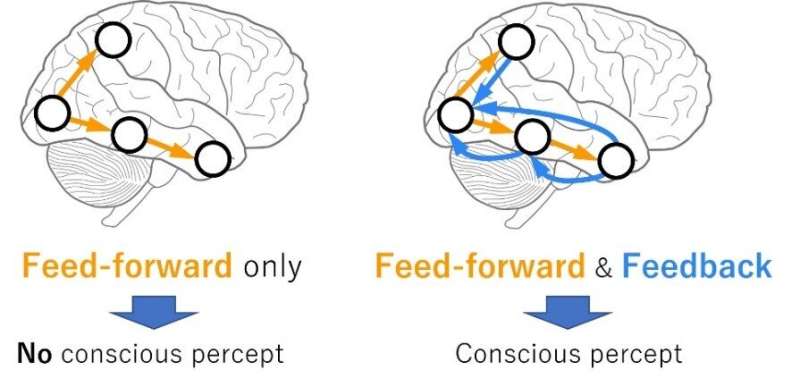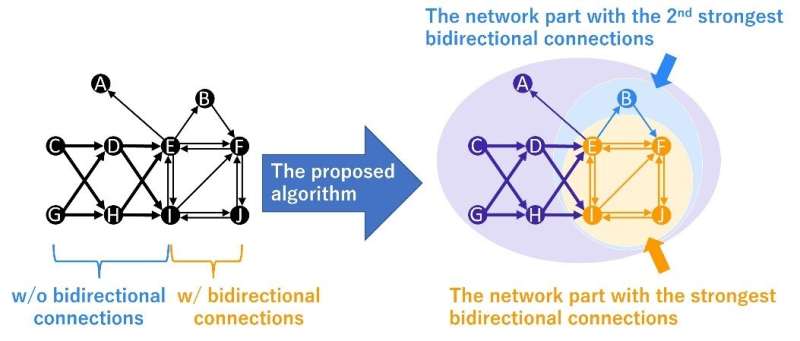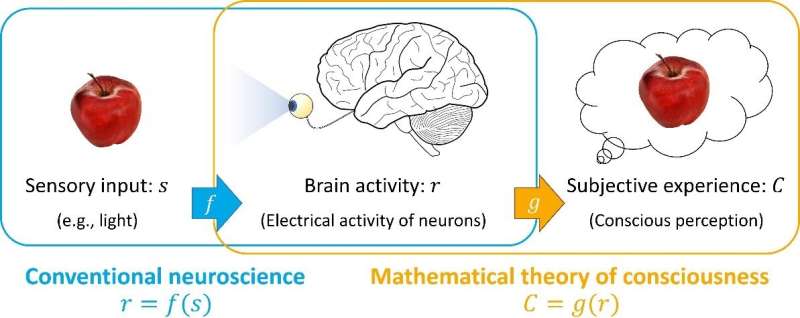Pinpointing consciousness in animal brains using a mouse 'brain map'

Science may be one step closer to understanding where consciousness resides in the brain. A new study shows the importance of certain types of neural connections in identifying consciousness.
The research, published in Cerebral Cortex, was led by Jun Kitazono, a corresponding author and a project researcher in the Department of General Systems Studies at the University of Tokyo.
"Where in the brain consciousness resides has been one of the biggest questions in science," said Associate Professor Masafumi Oizumi, corresponding author and head of the lab conducting the study. "Although we have not reached a conclusive answer, much empirical evidence has been accumulated in the course of searching for the minimal mechanisms sufficient for conscious experience, or the neural correlates of consciousness."
For this study, the team took a step toward identifying the minimally sufficient subnetworks in the brain that support conscious experience.
To identify the areas of the brain where consciousness resides, the researchers looked for one specific hallmark of consciousness within the neural networks of the brain: bidirectional pathways. When we see something or experience a sensation, our brains take in information. This is called a feed-forward signal, but receiving such feed-forward signals is not enough for consciousness. Our brains also need to send information back, in what is called feedback. Not every part of the brain can both receive feed-forward and return feedback information. Researchers hypothesized that these bidirectional connections are an essential hallmark of the parts of the brain responsible for consciousness.

"Feed-forward processing alone is insufficient for subjects to consciously perceive stimuli; rather, feedback is also necessary, indicating the need for bidirectional processing. The feedback component disappears not only during the loss of specific contents of consciousness in awake states, but also during unconscious states where conscious experiences are generally lost, such as general anesthesia, sleep and vegetative states," said Kitazono. He also explained that it does not matter if you are looking at a human, monkey, mouse, bird or fly; the bidirectionality of processing remains essential.
Researchers used a mouse connectome and computational techniques to test their idea. A connectome is a detailed map of the connections in the brain. First, they developed an efficient algorithm to extract the parts of the brain with strong bidirectional connections, called complexes. Then, they applied the algorithm to the mouse connectome.
"We found that the extracted complexes with the most bidirectionality were not evenly distributed among all major regions, but rather are concentrated in the cortical regions and thalamic regions," said Kitazono. "On the other hand, regions in the other major regions have low bidirectionality. In particular, regions in the cerebellum have much lower bidirectionality."
These findings align with where scientists have long thought consciousness resides in the brain. The cerebral cortex, located on the surface of the brain, contains sensory areas, motor areas and association areas that are thought to be essential to consciousness experience. The thalamus, located in the middle of the brain, has likewise been thought to be related to consciousness, and in particular, the interaction between the thalamus and cortical regions, called the thalamo-cortical loop, is considered important for consciousness. These results support the idea that the bidirectionality in the brain network is a key to identifying the place of consciousness.

Researchers emphasized that they are still working toward identifying the place of consciousness.
"This study focuses only on 'static' anatomical connections between neurons or brain areas. However, consciousness is 'dynamic,' changing from moment to moment depending on neural activity," said Oizumi. "Although anatomical connections tell us how neural activity would propagate and how brain areas would interact, we need to directly investigate the dynamics of neural activity to identify the place of consciousness at any given moment."
As a next step, he said the team is currently analyzing activity-based networks of the brain in various types of neural recordings.
"The ultimate goal of our lab is to find the mathematical relationship between consciousness and the brain," said Oizumi. "In this study, we have attempted to relate the network properties of the brain to the place of consciousness. We will further investigate the relationship between consciousness and the brain, toward what is our ultimate goal."
More information: Jun Kitazono et al, Bidirectionally connected cores in a mouse connectome: towards extracting the brain subnetworks essential for consciousness, Cerebral Cortex (2022). DOI: 10.1093/cercor/bhac143



















